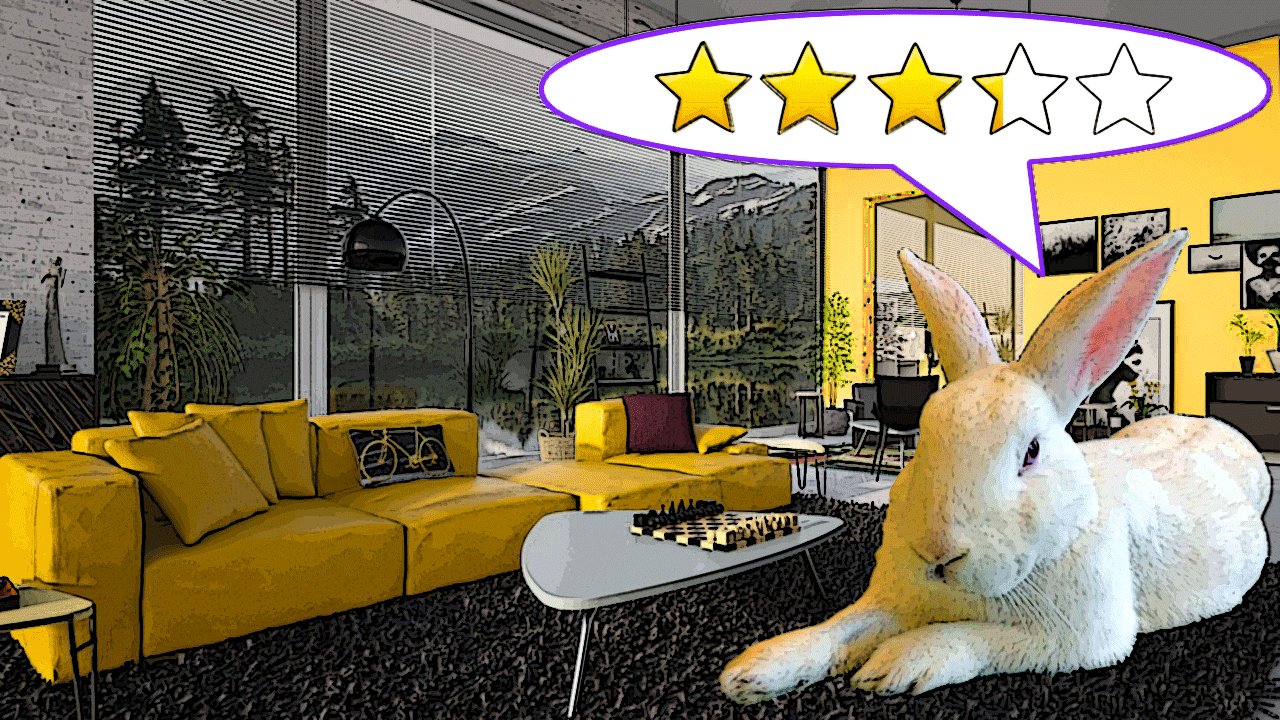
Experienced owners know how rabbits express their opinions, from gentle tooth grinds of delight to loud disapproving thumps. But what if your bun could review your house on TripAdvisor? Would he give it five stars? To help find out, I’ve created an interactive quiz showing how your bun might rate the accommodations in your home.
My quiz is based on the UK’s All Party Parliamentary Group for Animal Welfare (APGAW)’s welfare code of practice for rabbits.
APGAW is basically a lobbying organization that works on animal welfare issues. Their recently developed guidelines address a gap in codes of practice which exist for larger domesticated animals like horses, dogs, and cats, but hadn’t been developed for rabbits. They worked with several regional advocacy groups like the Royal Society for the Prevention of Cruelty to Animals (RSPCA) and the Animal Welfare Foundation to pool available expertise and produce a set of recommendations they could all agree on.
The quiz focuses on the AGPAW guidance for three of the five areas listed in the code of practice:
- environment
- behavioral needs
- companionship
While I can’t include every detail in the quiz, the sample of items I chose highlights many of the major considerations. Care to give it a try?
On behalf of your bun, click on the checkbox for each item that’s true, then press “Get Your Star Rating”.
Space
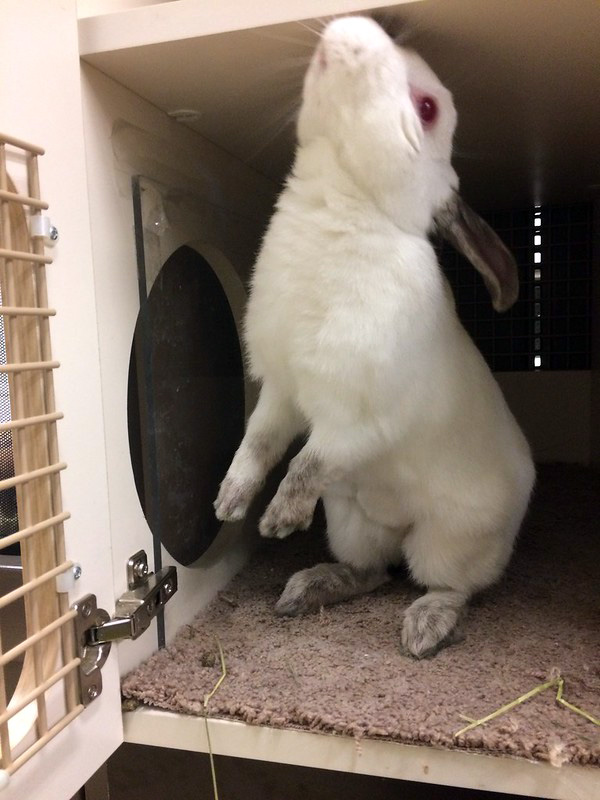
Can he stand up? Standing up on those big thumper back feet is a basic move in bunny ballet. A normal, curious bun will want to do this whenever something looks interesting or he just wants to take a better look around. If he can’t, that’s a significant restriction that will make him uncomfortable. Imagine how it would feel living in a place where you couldn’t stand up without hitting your head on the ceiling! To guarantee his happiness, your rabbit should have at least 1 meter of vertical space.
With a body built to run from predators, a rabbit’s ability to hop and scamper is paramount. How much space does he have to move around? The bigger the better. Can he hop, binky, and zoom? The welfare code recommends a running area of at least 3 x 2 meters for a bonded pair of buns. The more buns you have, the bigger the space you should allocate.
Remember that domesticated bunnies descend from wild European breeds who burrow underground where they are insulated from serious heat, cold, wind, and precipitation. For outside-dwelling bunnies, you’ve got to make sure they’re able to cool off when it’s hot, get warm when it’s cold, and that they’re protected from the elements.
And finally, what’s under bunny’s little feets? Sometimes a wire mesh is used to allow urine and feces to drop down, so they don’t build up in the habitat. This used to be considered good practice, but we now know that bunny feet are too delicate to spend all day sitting on wires – they can develop sores and injuries. Bun feet need a solid surface with good traction to enable freedom of movement to exercise as well as the ability to run away swiftly when fearful feelings arise.
Freedom from Predators
Animals who eat rabbits are everywhere. When it comes to predators and your whisker-nose, you obviously want to make sure they can’t actually get to him. For an outdoor rabbit, this means you have to provide a very secure shelter and check it frequently for any sign of damage.
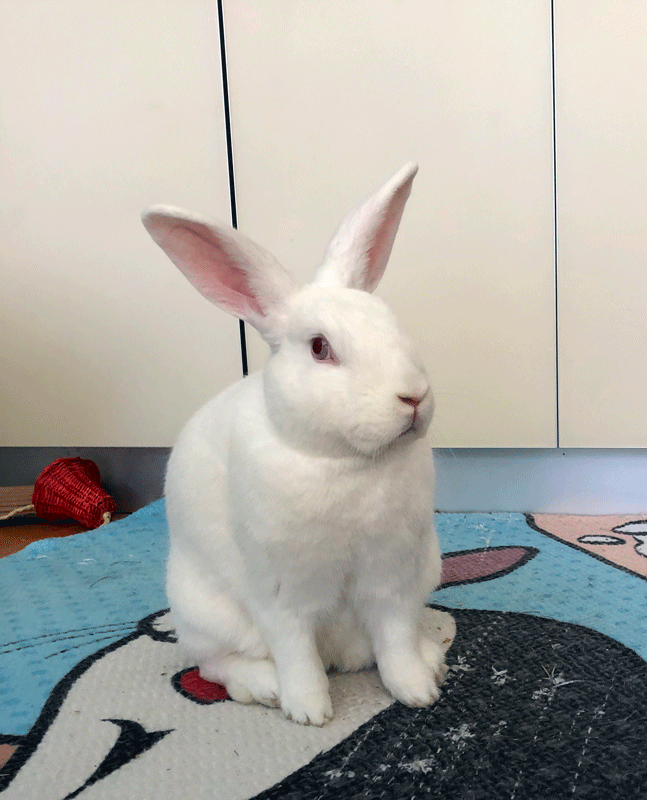
But keeping teeth and claws at bay isn’t the only issue. Imagine you’re in a sturdy wire cage and there’s a hungry tiger or bear right outside of it, staring at you, drooling and trying to break in. The fact he hasn’t been able to break through your barricade so far isn’t going to be very reassuring, is it?
Bunnies can not only see but also smell predators. Having them stalking around can be seriously scary to your little love muffin, and that stress can shorten their lifespan. To keep him from literally being frightened to death, you need to make sure an outdoor-housed bun has a place to hide out of sight of prey animals.
Unfortunately, for some folks, these threats may include your dog or cat. If you have an animal whose predatory instincts are triggered by small mammals, you really must find a way to keep them separate from your rabbits.
Several times we’ve fostered small dogs in our tiny condo. Though dog and bunnies are kept in separate rooms, there is a small hallway where occasionally the pup might roam. We quickly learned that, although we had a sturdy pet gate, seeing the dog caused our guys to pace, scurry, and generally be on high alert. The canine interloper, if interested in his four-footed housemates, would also become agitated, if only out of eagerness to say hello. Covering the pet gate in a layer of cardboard kept both sides calmer and happier — out of sight, out of mind.
Indoors/Outdoors
I keep my buns inside. I love the daily interactions we have and the opportunities I get to watch them all day long. They’re free roaming, so they’ve got plenty of space to scamper and exercise, and there generally aren’t any predators to bother them. Because we keep our place dry and comfortable, our guys aren’t at serious risk from weather conditions.
But ironically, being inside all the time isn’t ideal and this is where I’m currently deficient in welfare. Ideally, a bun should get some time outside every day, under careful supervision to ensure he stays safe.
Fresh air, sunshine, and natural foraging/digging are excellent for both mental and physical health. They keep toenails in check and vitamin D levels high. Like taking your dog out for a good run at a park, your long-eared lad will come back indoors feeling tired, satisfied, and ready for a nice nap.
Someone to Hang With
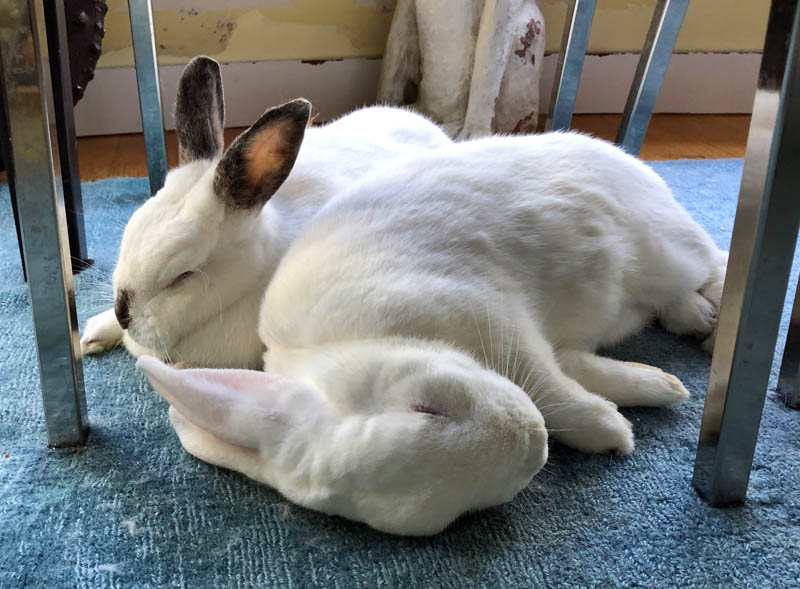
Rabbits are gregarious: they want to interact with other friendly beings. At the very least, your bun has got to have companionship in some form. For a solitary fluff-tail, you’re his lifeline, and you will need to find time for him every day. Left alone he is likely to experience loneliness and depression.
Keep in mind that you must also be good company. Buns generally don’t appreciate being picked up. Like anyone, they want to be in control of their own bodies. They’ll be far happier if your social time is down on the floor, where they are, not in your arms or on your lap.
And more and more it is becoming clear that having another bunny around is not just a nice-to-have. Conspecific (same species) companionship is tough to beat. Rabbits will not only keep each other company, they’ll get each other moving around and groom each other. Particularly when it comes to eye health, this can make a tremendous difference.
His Favorite Hobbies
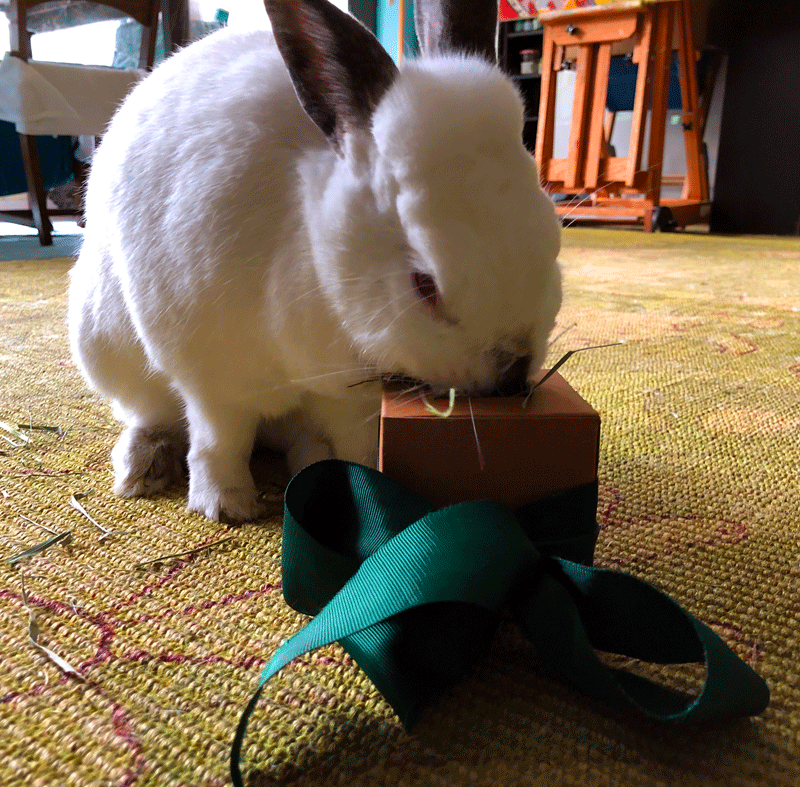
A rabbit’s gotta do what a rabbit’s gotta do! There are several types of instinct-driven activities that will appeal to your furry buddy. These include:
- digging
- foraging
- hiding
- chewing
- throwing
Enriching the environment to enable a wide range of these will make your ear-head happy. Inspire him and let him express himself. It’s both fascinating and entertaining to observe what he decides to do when he has lots of interesting options. Need ideas?
- Digging and hiding; how about a do-it-yourself cardboard box tunnel, filled with crumpled packing paper?
- Foraging: this snuffle mat is a great option
- Chewing and throwing: buy some toys or make your own
Once you get started, you’ll see how much fun it is to watch your furry pal doing what he does best!
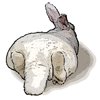 The Fluffy Tail of This Blog Post
The Fluffy Tail of This Blog Post
I encourage you to read the full Good Practice Code for the Welfare of Rabbits from AGPAW. You might want to print it out and keep it handy so you can continually improve your bunny husbandry skills.
Now you know how much space as well as what conditions, protections, and companionship you need to provide to make a good home for your bun. Making sure all those needs are met, and equipping him with a wide range of recreation, will turn your home into a little Bunny Club Med. Then you’ll earn that 5-star rating we all crave.
Yellow living room in featured image by 5460160 from Pixabay
Julie says:
I was taking my bun outside in a pened area but not recently because we had a infestation of caterpillars so I kept him indoors away from all insects and bugs that can harm him. He free roams from 730 am until 930 , 10 pm then he is in his inclosed pen with water food and toys and treats to find .
Melinda says:
Those are three great things you’re doing! What an attentive and caring owner you are. I hope the caterpillars will clear up so he can go outside again soon.
Syl says:
There’s no doubt that Moraea and Finnegan reside in an upscale Club Med!! and the rent is so affordable!!
Lucky them!!!
Melinda says:
I think Fin and Moraea would probably deduct some points because they never get to go outside. But we do our best to make them happy in whatever ways we can!
Lauren says:
This quiz and your content explaining the importance of the right answers are amazing!!! thank you!!
Melinda says:
Thanks so much! I hope they were helpful.
Jean Calandrino says:
Our rating recently went up because we adopted a sweet boy bun, Dash, as a bonding companion for our wonderful Luna. The two are now fully bonded❤️❤️❤️ We can see that Luna has become more confident since bonding with Dash. Also, our dining room has become a designated bunny space that they enjoy thoroughly! Thanks for providing ideas to benefit bunny wellbeing!
Melinda says:
So glad to hear you were able to bond your bunnies! Congratulations! What fun your dining room must be now. 🙂 Did you get help with the bonding? Was it difficult? How long did it take?